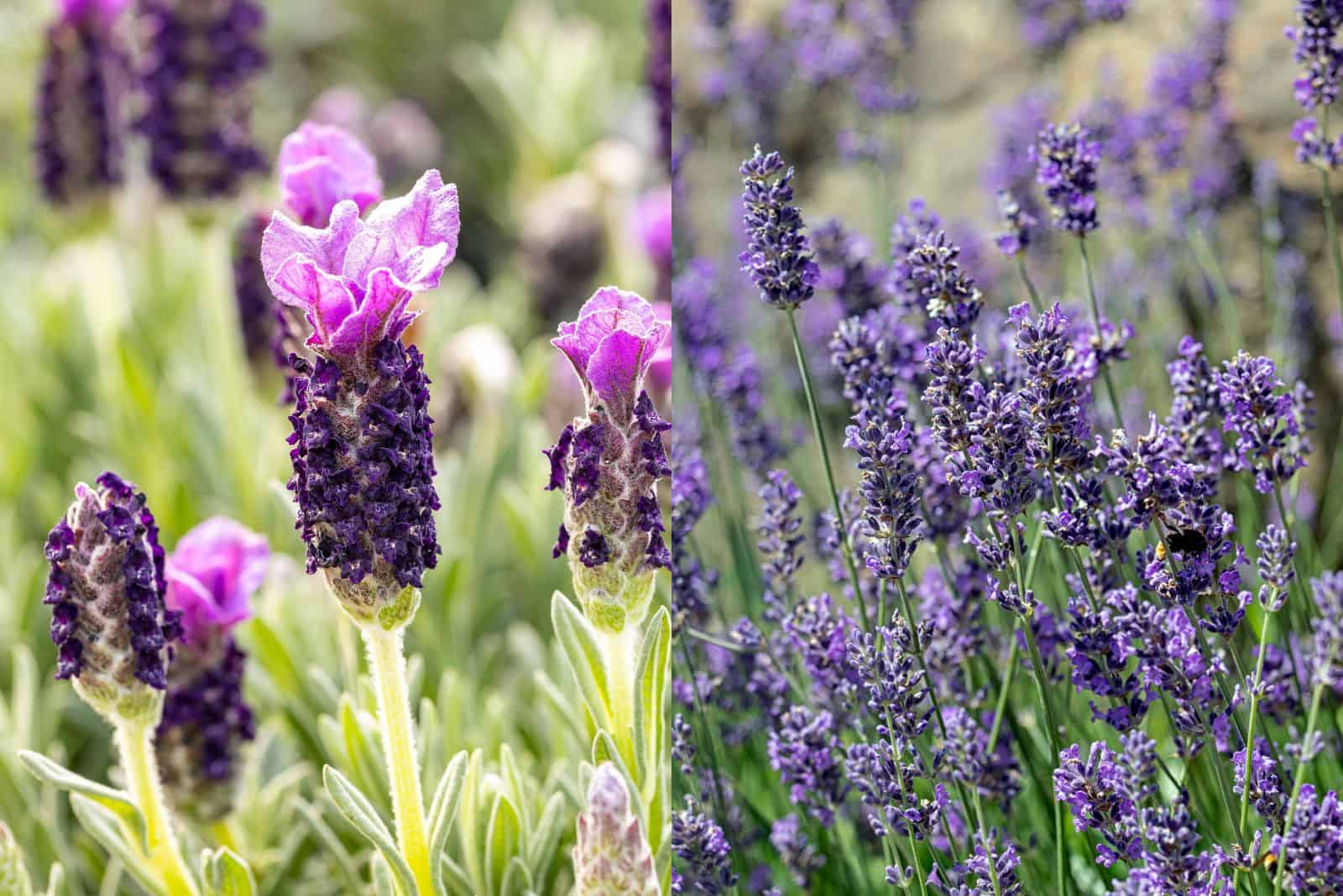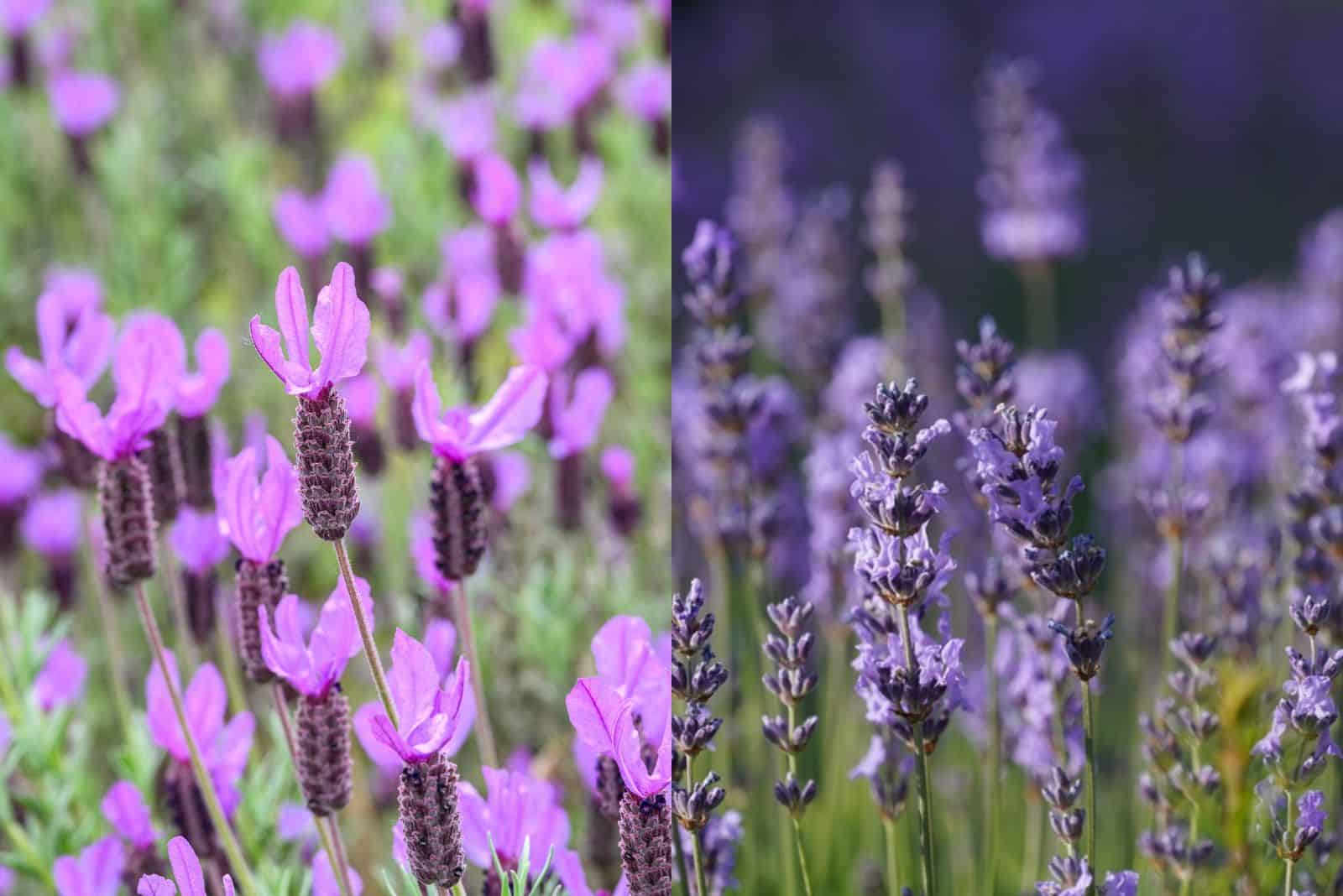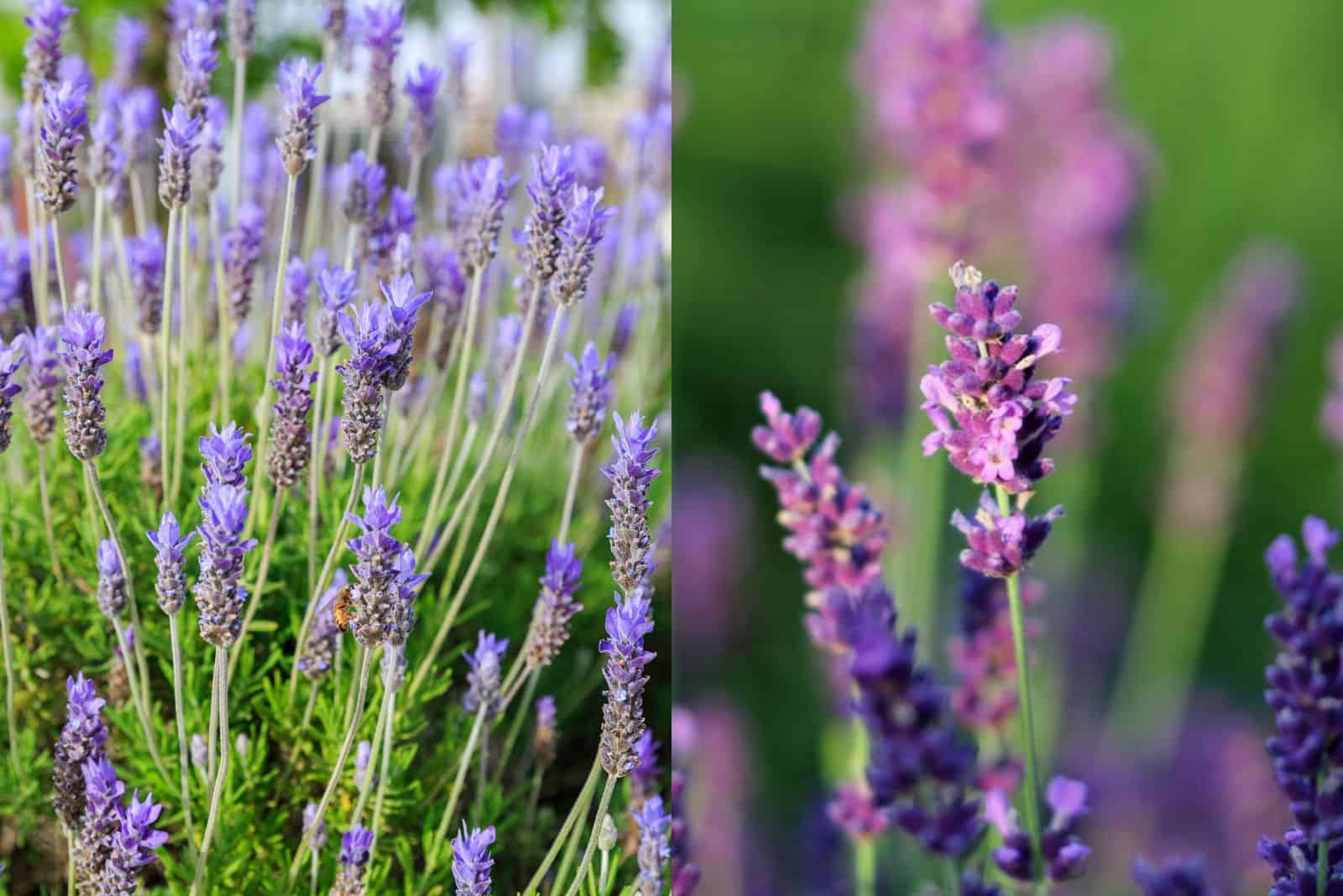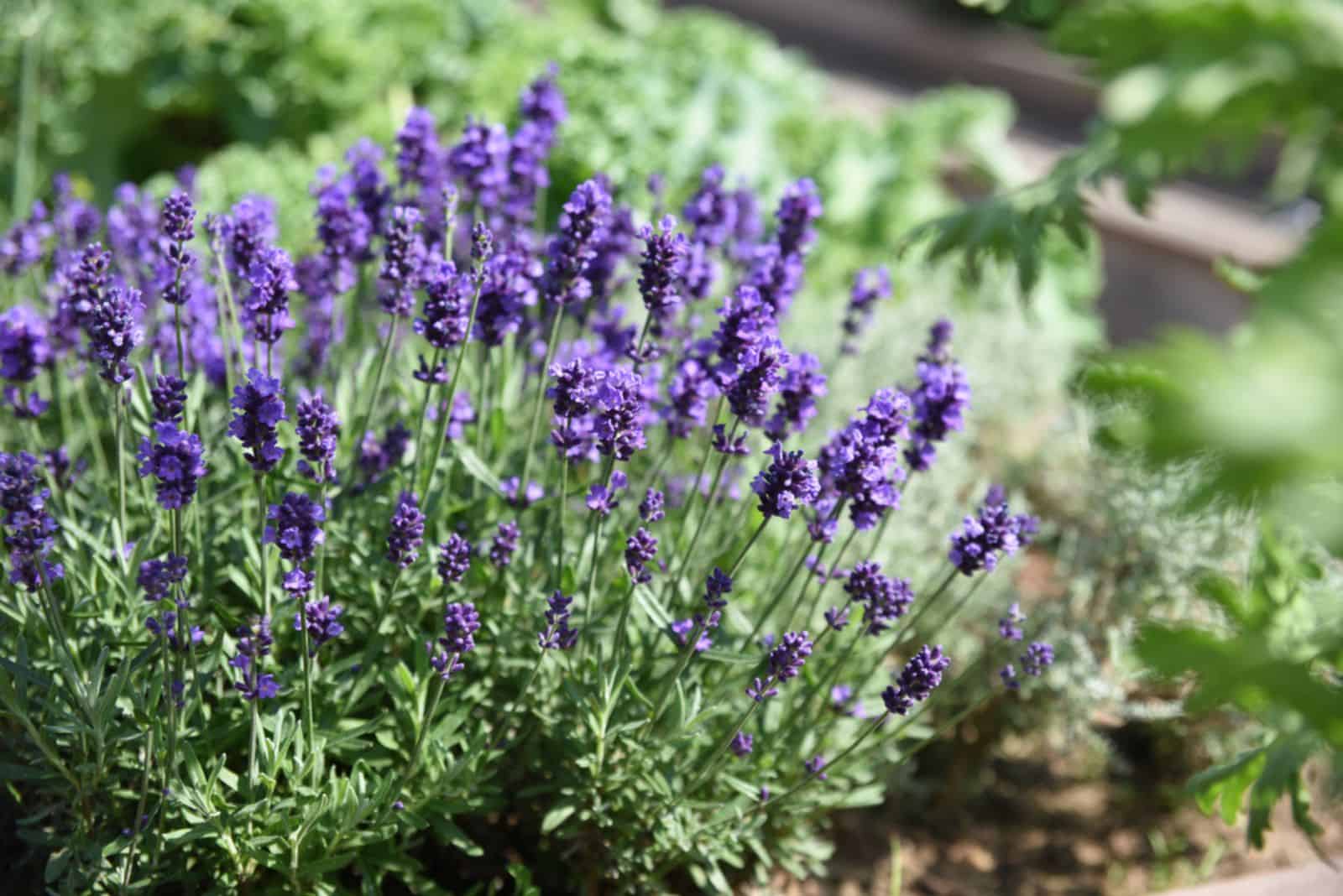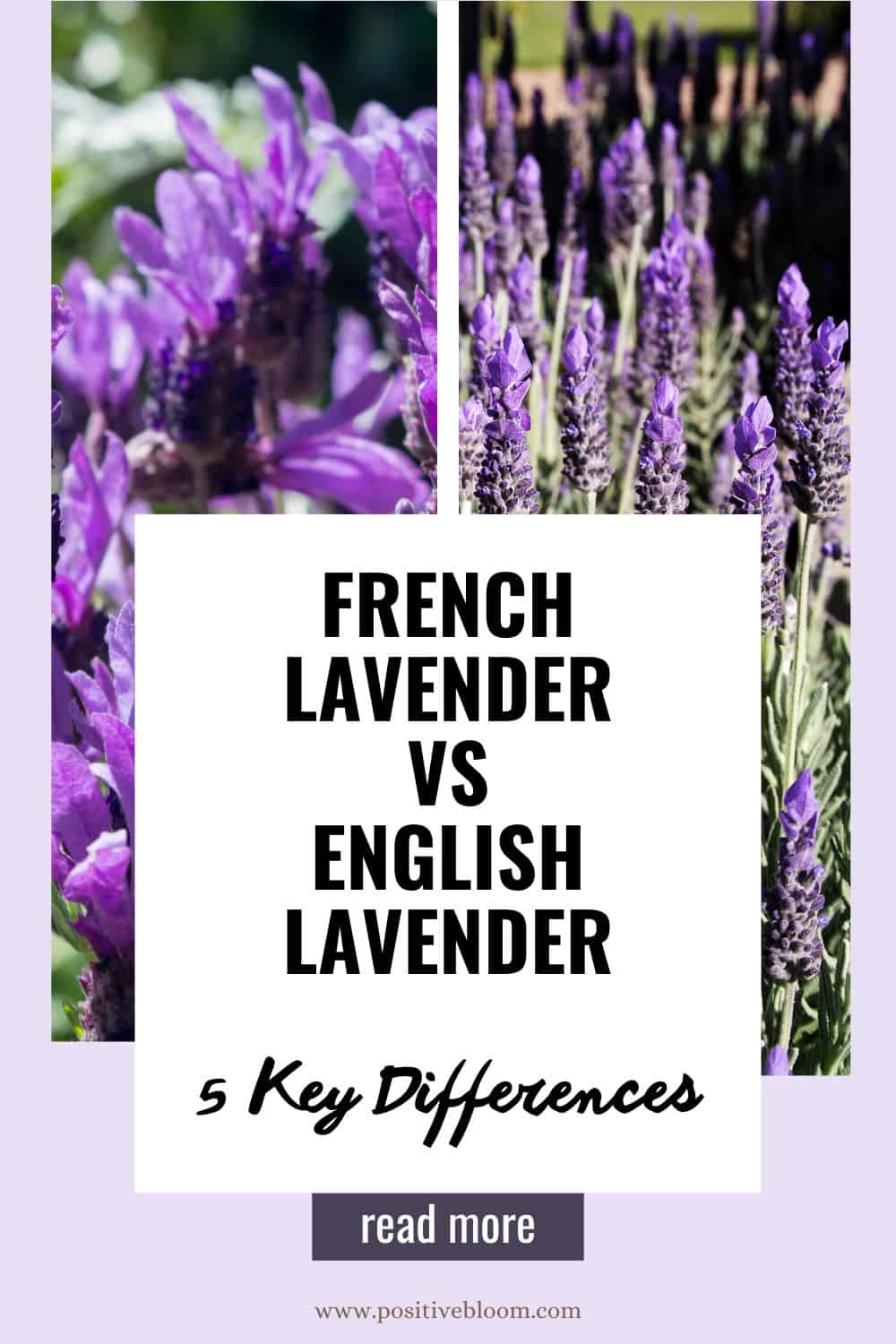When you think of the lavender plant, I’m sure the first thing that comes to your mind are the breathtaking flowers.
The next thing that makes these plants unique is their intoxicating scent. It’s no wonder lavender is grown worldwide, as every room smells way better with this plant in it.
I believe many beginner growers have issues differentiating lavender varieties as they all look very similar.
In this article, I’ll tell you more about all the differences between French lavender vs English lavender.
Contrary to popular belief, these are actually separate species with distinctive features.
Let’s dive right in!
French Lavender vs English Lavender: The Differences
French and English lavender look fantastic and very similar, but some notable differences will help you tell these plants apart.
The main differences between French and English lavender are taxonomy, cold hardiness, size, fragrance, and bloom time.
Here is a table with an overview of the differences between these two lavender varieties.
[table id=540 /]
Let’s get into detail!
1. Taxonomy
Taxonomy is actually the first thing we use when we want to know if two species are different.
The scientific name of the English lavender plant is Lavandula angustifolia. In contrast, French lavender is referred to as Lavandula dentata in botany.
Therefore, English and French lavender are completely different species.
Both plants come from the Lamiaceae family and belong to the Lavandula genus, and the similarities in taxonomy end there.
It’s essential to note that Lavandula stoecha is used for French lavender, but it’s not the correct term. It refers to the Spanish lavender, which is also cultivated in France, hence the confusion.
There are many cultivars of both of these species, which is another reason why the two are confused.
Hidcote lavender and Munstead lavender are the most common English lavender varieties. You may also come upon the hybrids of two species, English and Portuguese lavender, and Lavandin grosso (Lavandula x intermedia ‘Grosso’).
Regarding the French lavender plant, the most common variety is Provence.
2. Cold Hardiness
English lavender is cold hardy in USDA hardiness zones 5 and above. French lavender, on the other hand, is hardy in zones 8 through 11, so it’s a perfect choice for you if you live in warmer climates.
For instance, if you decide to grow lavender in Florida, I recommend the French variety. You can go with English lavender if you live in the northern parts of this state.
Interestingly, the English lavender cultivar Hidcote superior, is very famous due to its ability to endure temperatures as low as -20°F.
French lavender won’t survive the harsh winters except in its natural habitat, the Mediterranean. That’s why you’ll see French lavender in Italy, France, and Spain throughout the year, as the winter temperatures in these areas typically don’t fall below 50 degrees Fahrenheit.
The English variety is suitable for outdoor planting in colder climates. You can grow French lavender in containers and transfer them indoors as soon as temperatures drop.
3. Size
Now we come to the part I call the obvious difference. When you take a look at the mature French and English lavender plants, you’ll notice that they differ in size.
For instance, the French variety can reach 3 feet in height and width if given the right conditions.
On the other hand, English lavender rarely exceeds 2 feet and has a more compact growth habit.
If you want to make a lavender hedge, I recommend the English variety due to its growth habit. Of course, French lavender will also look fascinating, but bear in mind this variety thrives in a warm climate.
The unique lavender scent comes to mind when I think of Mediterranean countries. English lavender is more famous, and many growers think that all other lavender species smell the same.
4. Fragrance
That’s actually not the truth. Another difference between French and English lavender is in the scent.
The English variety is renowned for its strong but sweet scent. Due to its stronger fragrance, it’s commonly used in aromatherapy worldwide. Additionally, it doesn’t contain high concentrations of camphor, which makes it suitable for culinary purposes.
On the other hand, the more subtle scent of French lavender gave it an irreplaceable part in the French perfume industry. Many describe the scent as sweet but also piney.
Both varieties smell amazing, and if you ask which smells better, well, you are the only one who knows the answer to that question (based on your preferences)!
Essential oils with both scents have a relaxing effect, which is another reason why these plants are one of the best to grow.
5. Bloom Time
We’ve come to the last difference between the English and French varieties of lavender.
If you are a fan of the amazing flowers of these unique plants, then you need to know when lavender plants bloom and how long the blooms of each variety last.
Let’s first discuss French lavender flowers. One of the major characteristics of this variety is the long blooming time. You can enjoy its beautiful flowers and scent from the beginning of the spring until the end of the summer.
This makes the French variety perfect for flower beds in warmer climates.
As far as English lavender is concerned, the purple flowers will most likely appear in the middle of the summer and last for about 4 weeks.
You can enjoy English lavender flowers a little bit longer if you prune the plants correctly.
There’s one interesting fact about the lifespan of these plants, which is that the blooms of the French variety last longer, but the lifespan of the plant is shorter. This variety can survive for about 5 years in a home garden.
Regarding English lavender, its lifespan is one of its best characteristics. It can survive for 15 years, and not even very cold winters can kill it.
French Lavender vs English Lavender: The Similarities
When you look at these two lavender varieties, you might really think they are the same plant. I grow my French lavender as a houseplant, and the English variety adorns my outdoor garden.
English and French lavender have similar care requirements, foliage, and flowers, and they’re used for similar purposes.
Let’s take a closer look!
Care Requirements
All lavender varieties have the same light requirements. These plants simply adore the full sun and will thrive best in such light conditions.
They aren’t fans of high humidity; arid climates suit their humidity requirements best. If you live in an area with naturally high humidity, I recommend growing lavender as houseplants. The major reason for this is that you can control humidity levels indoors.
Regarding watering requirements, lavender isn’t a heavy drinker. This is an advantage for forgetful growers. But there’s one problem with this feature; it actually means it’s really easy to overwater the lavender plant.
The right type of soil can help you avoid water issues. For instance, well-draining soil prevents water accumulation in lavender soil and decreases susceptibility to root rot.
You can skip the feeding part of plant care because lavender doesn’t need any additional nutrients.
But the one thing you should not skip is pruning. Lavender goes through 8 stages of growth, and you’ll need to prune the buds in the first growing season if you want it to produce flowers.
Similarities In Appearance
The foliage, flower shape, and color are the main reasons these two lavender varieties are commonly mistaken.
Green foliage grows on elongated stems and makes lavender species truly fascinating. Of course, the lovely purple flowers of both English and French lavender are the features that make these plants easily recognizable.
Lavender will undoubtedly make every household or home garden prettier and smell wonderful.
According to research, lavender will help you sleep better if you use its essential oils. Some people even use it to treat skin problems or deal with health issues such as high blood pressure.
Uses And Benefits
I’m sure you already know that plants help us with stress and anxiety in general, so this is just one more reason to grow lavender.
Making sachets or potpourri is another great thing you can do with English and French lavenders.
I especially love the scent of lavender in my cleaning products. I can’t think of any disadvantages of this plant, so I highly recommend adding it to your home garden.
FAQs
Which is the most fragrant lavender?
Lavandin is a cultivar of two lavender species, Portuguese and English lavender, and it’s scientifically known as Lavandula x intermedia. It has by far the stronger fragrance of all lavender varieties. The next in the line is common lavender aka English lavender (Lavandula angustifolia).
Which type of lavender is best?
The best type of lavender to grow in your home garden depends on the climate you live in and your personal preferences in terms of fragrance, appearance, and size. If you live in an area with cold winters, English lavender and its cultivars are definitely the best choices. French lavender is the best choice if you prefer taller species whose blooming season lasts a long time.
Wrapping Up
When a beginner grower asks me which plant to add to their home garden, lavender is definitely in my top 5 answers.
However, we need to know the differences between lavender varieties in order to adjust the conditions or avoid certain species depending on the temperature requirements.
Today I’ve shown you the differences between French lavender vs English lavender. These are separate species and differ in taxonomy, cold hardiness, size, fragrance, and bloom time.
I hope I helped you decide which one to grow, but one thing is for certain; you’ll enjoy growing lavender no matter the species you choose.
Until next time!
Like this post? Share or pin it for later!

